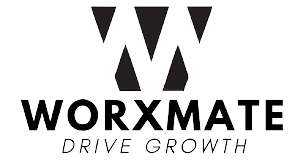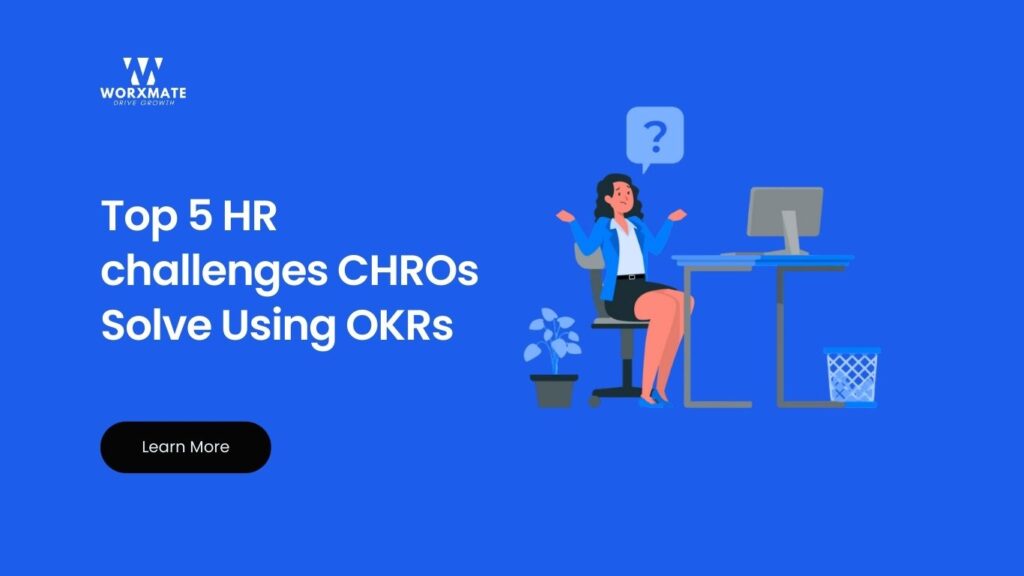When was the last time you felt truly in control of your HR strategy? If you’re like most CHROs, that feeling might be more elusive than you’d like to admit. As a CHRO, you’re at the forefront of your organization’s most valuable asset – its people.
But with great power comes great responsibility, and often, great headaches. From talent wars to performance plateaus, the challenges seem endless.
You are expected to do it all: align HR with business strategy, boost employee engagement, attract top talent, and more. But let’s be honest—this isn’t easy.
The good news? There’s a game-changer that can help: OKRs (Objectives and Key Results) — which help track performance, create alignment, and encourage engagement around measurable goals.
We ain’t just saying it.
Data from the Deloitte report on Performance Management states that “90 percent of companies that have redesigned performance management see direct improvements in engagement, 96 percent say the processes are simpler, and 83 percent say they see the quality of conversations between employees and managers going up.” be highlighted and designed separately)
Honestly, OKRs are a proven framework that some of the most successful companies in the world use to align goals, drive performance, and foster innovation. For CHROs, implementing OKRs can turn HR from a reactive function into a proactive force for change.

Pain Point 1: Aligning HR Goals with Business Strategy
The Challenge
Let’s face it—aligning HR goals with the broader business strategy can feel like trying to hit a moving target. The pressure is on to ensure every HR initiative supports the company’s objectives, but without a clear framework, it’s easy to lose sight of the big picture.
How OKRs Help?
OKRs bring everything into focus. They allow CHROs to set clear, actionable goals that are directly tied to the business’s strategic priorities. This ensures that every HR initiative, from talent development to culture-building, drives the company forward.
For Example
Imagine a mid-sized tech company where the HR department needs to ensure that its activities align with the company’s aggressive growth plans.
The HR team sets an OKR to “Increase employee retention rates by 15% in the next six months.” The key results could include implementing a new employee recognition program, enhancing career development opportunities, and conducting regular employee feedback surveys. By focusing on these key results, the HR team ensures that their efforts are directly contributing to the company’s broader goal of retaining top talent to support growth.
Pain Point 2: Enhancing Employee Engagement and Retention
The Challenge
Employee engagement is a business imperative. Disengaged employees aren’t just less productive—they’re also more likely to leave. For CHROs, keeping the workforce engaged and committed is a constant challenge.
How OKRs Help?
OKRs create a sense of purpose. When employees can see how their work directly contributes to the company’s success, they’re more motivated to give their best. Plus, OKRs make it easier for HR to identify and address engagement issues before they escalate.
For Example
Consider a manufacturing firm facing high turnover rates among skilled workers. The HR department sets an OKR to “Boost employee engagement scores by 20% over the next quarter.
Key results might include launching a new mentorship program, increasing the frequency of team-building activities, and improving internal communication channels.
By focusing on these actions, the HR team creates a more engaged workforce, which in turn leads to better retention rates and a more stable workforce.
Pain Point 3: Streamlining Talent Acquisition and Development
The Challenge
In today’s competitive market, finding and developing top talent can feel like searching for a needle in a haystack. CHROs must balance speed with quality while also meeting the ever-changing expectations of a modern workforce.
How OKRs Help?
OKRs simplify the complexity. By setting specific objectives for hiring, onboarding, and training, CHROs can streamline processes and ensure they’re aligned with the company’s long-term goals. It’s about working smarter, not harder.
For Example
A growing retail company needs to fill numerous positions quickly to support its expansion. The HR team sets an OKR to “Reduce time-to-hire by 30% over the next quarter.
” The key results could involve automating parts of the recruitment process, partnering with new job boards, and improving the onboarding process.
By setting clear targets and regularly measuring progress, the HR team can streamline the recruitment process and ensure they have the right people in place to support the company’s growth.
Pain Point 4: Measuring HR Performance and Impact
The Challenge
How do you quantify the impact of HR? Traditional metrics only tell part of the story, and CHROs often struggle to prove how HR initiatives contribute to business success.
How OKRs Help?
OKRs take the guesswork out of measuring HR performance. By defining specific key results that link HR activities to business outcomes, CHROs can demonstrate value with clear, tangible data. No more wondering—just results.
For Example
In a healthcare organization, the HR team wants to prove its value by demonstrating the impact of its initiatives.
They set an OKR to “Increase the accuracy of HR performance metrics by 25% within six months.” Key results could include implementing a new HR analytics platform, training HR staff on data analysis, and establishing clear benchmarks for success.
By achieving these key results, the HR team can provide more accurate and meaningful data, showing how their work directly contributes to the organization’s success.
Pain Point 5: Managing Change and Driving Innovation
The Challenge
Change is hard, and fostering innovation can be even harder. Yet, in a fast-paced world, CHROs must lead the charge in both areas to keep their organizations ahead of the curve.
How OKRs Help?
OKRs empower HR leaders to manage change effectively and spark innovation by setting clear, actionable goals. They provide a roadmap that guides teams through transitions and encourages them to think creatively.
For Example
A startup in the fintech industry is looking to establish itself as a leader in HR practices. The HR department sets an OKR to “Launch three innovative HR initiatives within the next year.
” Key results might include developing a unique employee wellness program, creating a new diversity and inclusion strategy, and implementing a flexible working hours policy.
By setting ambitious OKRs, the HR team positions itself as a leader in innovative practices, helping the company attract top talent and improve its employer brand.
Conclusion
OKRs are more than just a management tool—they’re a strategic asset that can help CHROs address their most pressing challenges, from aligning HR with business goals to driving innovation. By setting clear, measurable objectives, CHROs can turn HR into a powerhouse of productivity and performance.
If you’re a CHRO ready to tackle your toughest challenges and elevate your HR strategy, it’s time to harness the power of OKRs. Start today, and watch as your HR initiatives become more aligned, impactful, and innovative.
Worxmate’s OKR Solution can help you solve your HR challenges effectively



